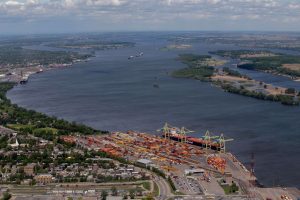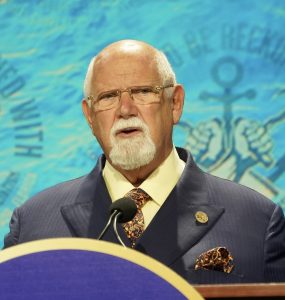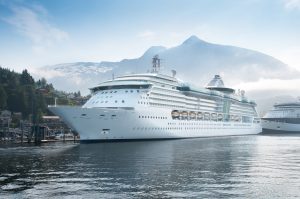By Michael Grey*

Strategies that contribute to the saving of the planet ought to be cheered to the rafters, but I confess that when I read about the pedestrian pace on passage of some modern ships, it was with rather mixed emotions. According to those knowledgeable folk in BIMCO, the speed of containerships and bulk carriers on passage for the first eight months of this year was down by some 3% over the previous year to substantially less than 14 knots, as they saved fuel, emissions of CO2 and the aforesaid planet.
As somebody who cut his teeth as a technical journalist reviewing cargo liners designed for little other than speed, it really does not seem that we have progressed very much, although if this is what the punters of today want, there can be no argument.
In my memory bank, there remains a long list of quite extraordinary ships that emerged in the ten years before the 1973 oil price hike required a lot of rapid second thoughts. Shippers were enthused by the prospect of getting their goods to market ever faster and in the heady competition joined by the first container consortia, the designers were given free rein.
Hull-forms of hydrodynamic perfection (sometimes, it has to be said, at the expense of sea-keeping) were found in these ocean greyhounds, but in their machinery spaces were crammed enormous horsepower, in the shape of huge steam turbines and slow speed diesels the size of which the world had never seen.
I recall being astonished at one mighty Japanese monster in which there were three huge diesels alongside each other with three propellers. And if these ships had not managed at least 28 knots on trials, you had the impression that the owners would have refused to take delivery. The ultimate expression was the rather less elegant (somebody called them brutally crude) 33 knot SL7s of Malcom McLean, powered by the same machinery that drove the US Navy’s best battleships in WW2.
The surprising thing was that even after the two oil-shocks of the 70s the container lines still continued to market their speed on passage. True, the thirstier ships were re-engined, and McLean’s monsters sold off to the US military, but speeds came down only marginally. But with no environmental brakes being hung around the necks of designers, it was only since the start of the century that green pressures have begun to shame the shippers. They have piled on ever since and speed has been in remorseless decline.
Back to the era of “low-powered steamer”
But a 13.7 knot average on a deep-sea passage is getting back to the days of the “low powered steamer” that required its own section in the “Ocean Passages of the World” publication. Perhaps the days of speed at sea will never return, which will cheer all those who wish us to stay at home and subsist on home grow root vegetables. Perhaps operators will talk to their ports and terminals rather more constructively and minimise all those wasted days at anchor awaiting a berth. Perhaps there will be some amazing new zero-emission fuel which will enable the chief to crack open the throttles. But realists will suggest that the speedy ship has no future.
And with no prospect that the various fuels being trialled at present will be available at prices that will facilitate faster passages, the old saying “more days, more dollars” will be the lot of the seafarers trundling around the sea-lanes at speeds with which their grandfathers would have been familiar. A fast day’s run was exhilarating on whatever ship you were sailing in. On the commonwealth cargo liners I sailed in, we would turn our caps back to front if we made 400 miles for the day.
Perhaps nuclear power might get up and running again, as there are already very capable small and micro-designs available for those brave enough. Just imagine going ten years between bunkering. But that is fanciful, as you can imagine the shrieks from the nay-sayers. Perhaps we are doomed, as some already say, to less trade, more “on-shoring”, a return to sail or its assistance. It is difficult not to be enthused by Cargill’s attempt to cut 30% of the emissions from the 43,291dwt Pyxis Ocean, fitted with two of the biggest sails ever seen. Could it be the start of something big? It won’t bring us back speed, but big ships chasing the great wind belts around the world, might restore some of the romance, which has been sadly lacking.
(Maersk container ship photo)
Michael Grey is former editor of Lloyd’s List. This column is published with the kind permission of The Maritime Advocate.








